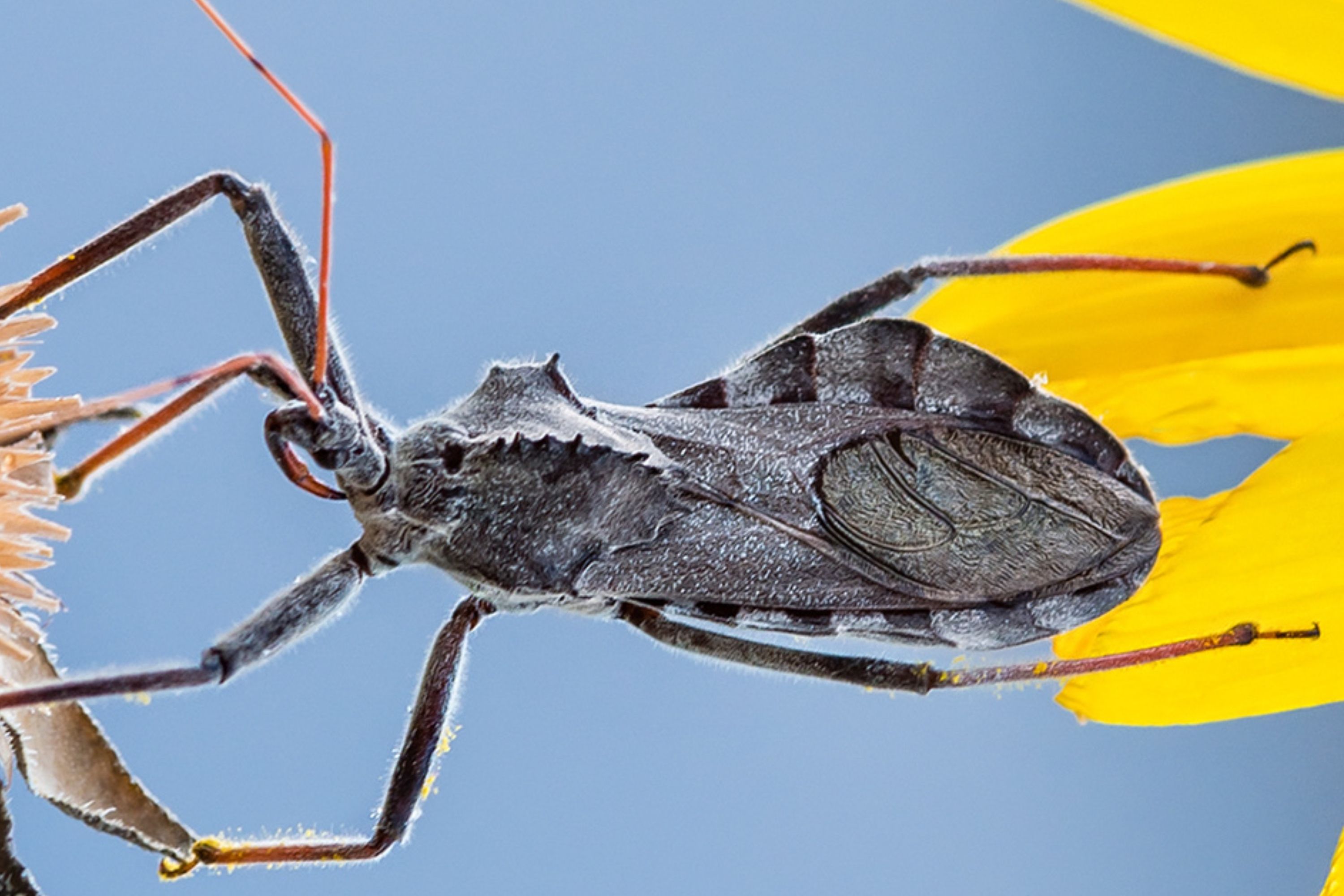Wheel bug
(Arilus cristatus)

Description
Arilus cristatus, also known as the North American wheel bug, is a species of large assassin bug in the family Reduviidae and the only species of wheel bug found in the United States. It is one of the largest terrestrial true bugs in North America, reaching up to 1.5 inches (38 mm) in length in its adult stage. It is sexually dimorphic, in that males are somewhat smaller than the females. A characteristic structure is the wheel-shaped pronotal armor. North American wheel bugs prey on caterpillars and beetles, such as Japanese beetles, the cabbage worm, orange dogs, tent caterpillars, and the Mexican bean beetle, all of which they pierce with their beak to inject salivary fluids that dissolve soft tissue. The North American wheel bug is most active in daylight, but may engage in predatory behaviors at night in areas illuminated by lights. Because most of its prey are pests, the wheel bug is considered beneficial. It is camouflaged and very shy, residing in leafy areas and hiding whenever possible. Specifically, habitats of the North American wheel bug include sunflowers, goldenrod, cotton, trunks of locust trees, and various fruit and tree groves. It has membranous wings, allowing for clumsy, noisy flight which can easily be mistaken for the flight of a large grasshopper. The adult is gray to brownish gray in color and black shortly after molting, but the nymphs (which do not yet have the wheel-shaped structure) have bright red or orange abdomens. It was described in 1763 by Carl Linnaeus. Despite the prevalence of the North American wheel bug in many habitats, the information compiled concerning the species is haphazard and incomplete.
Taxonomic tree:







